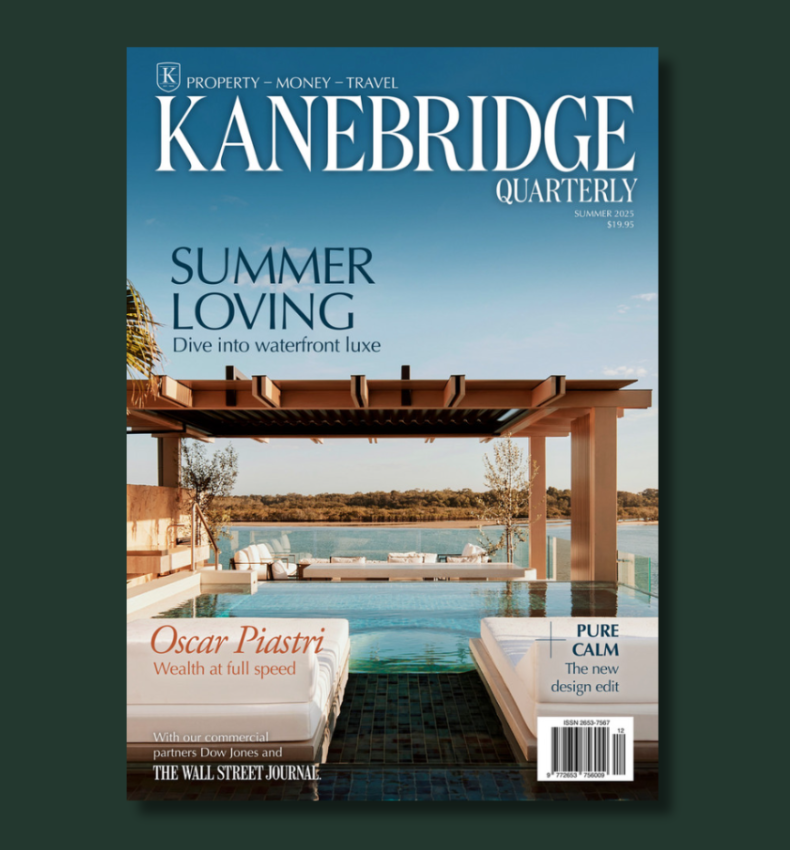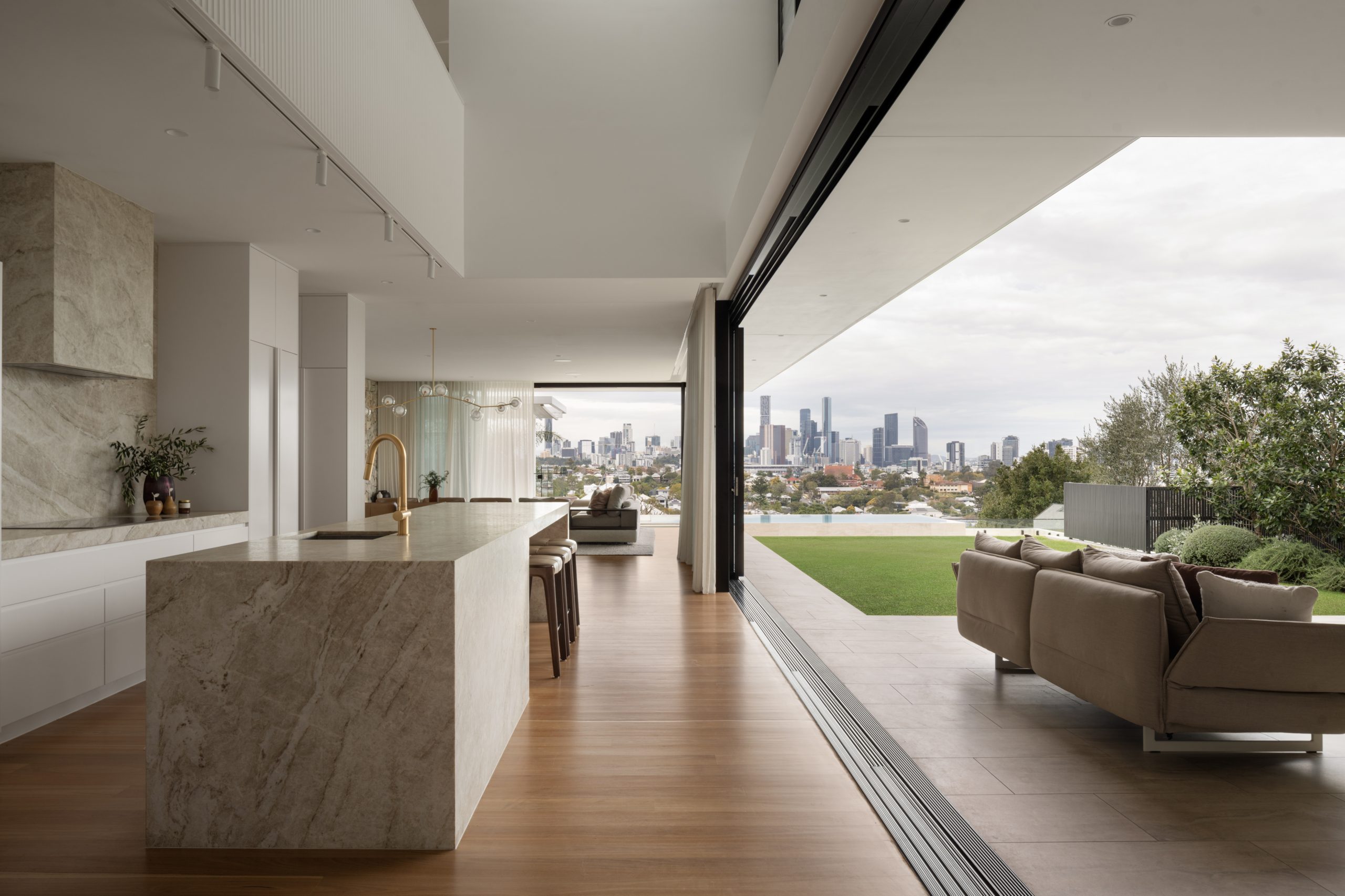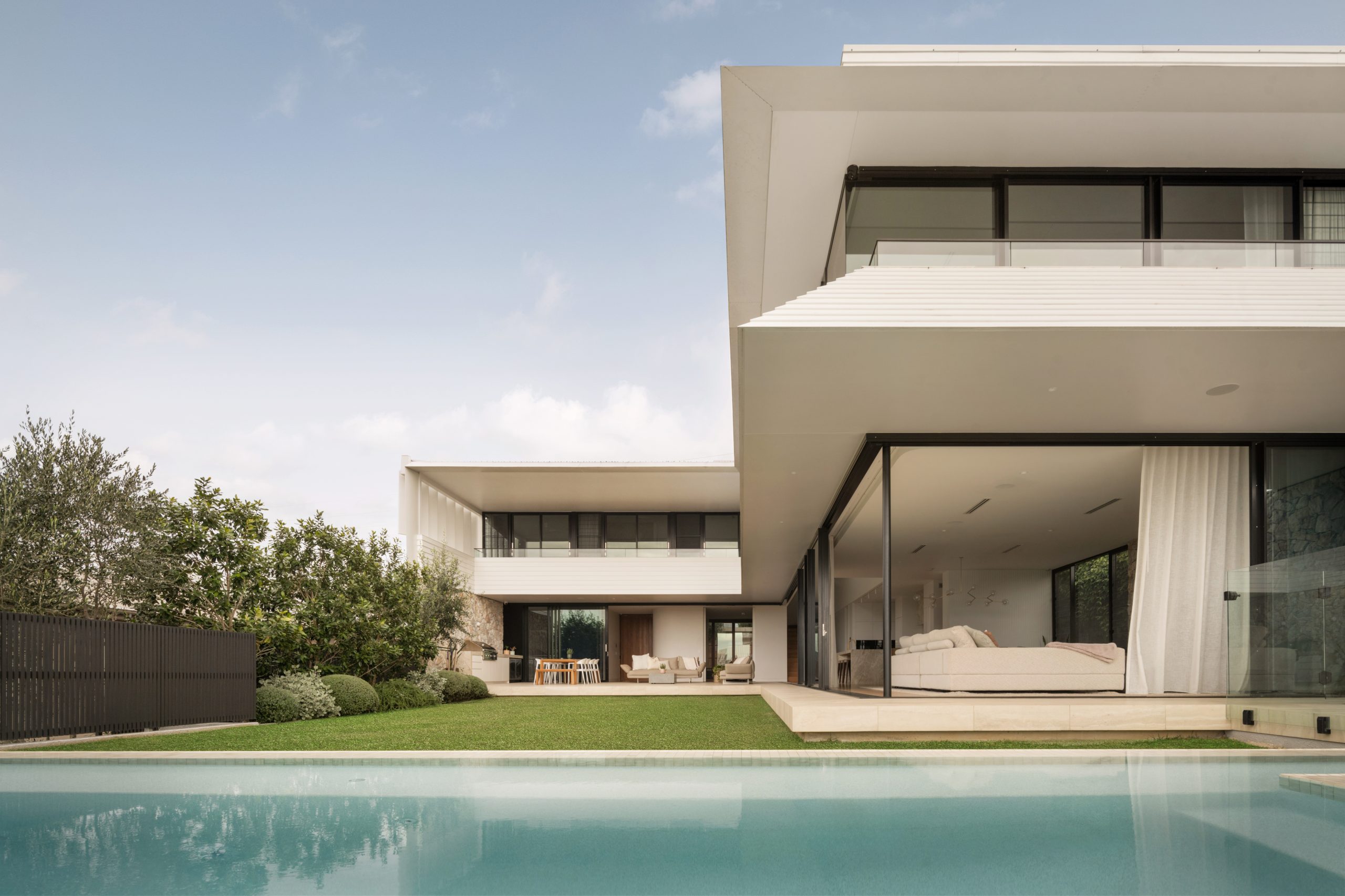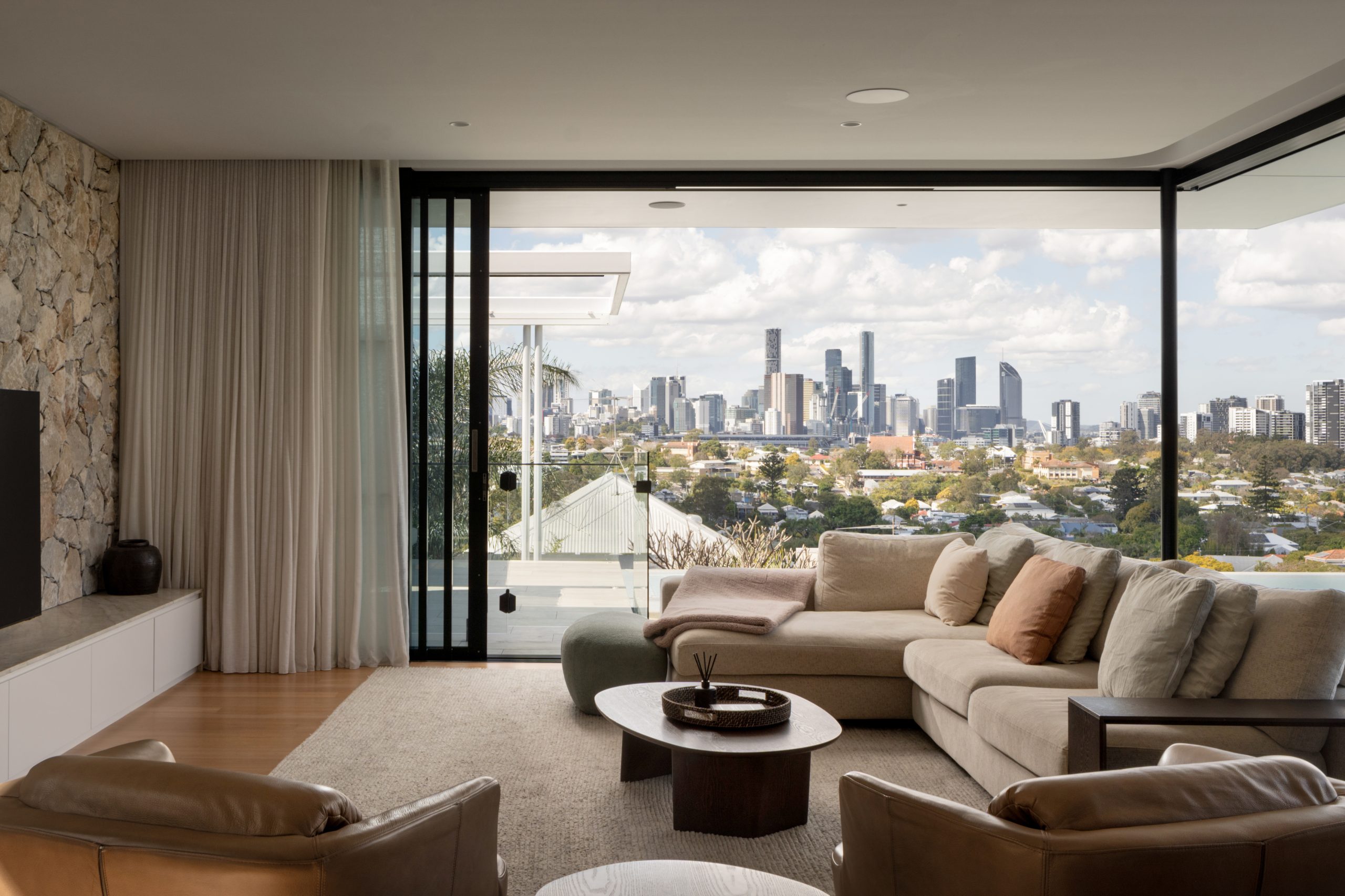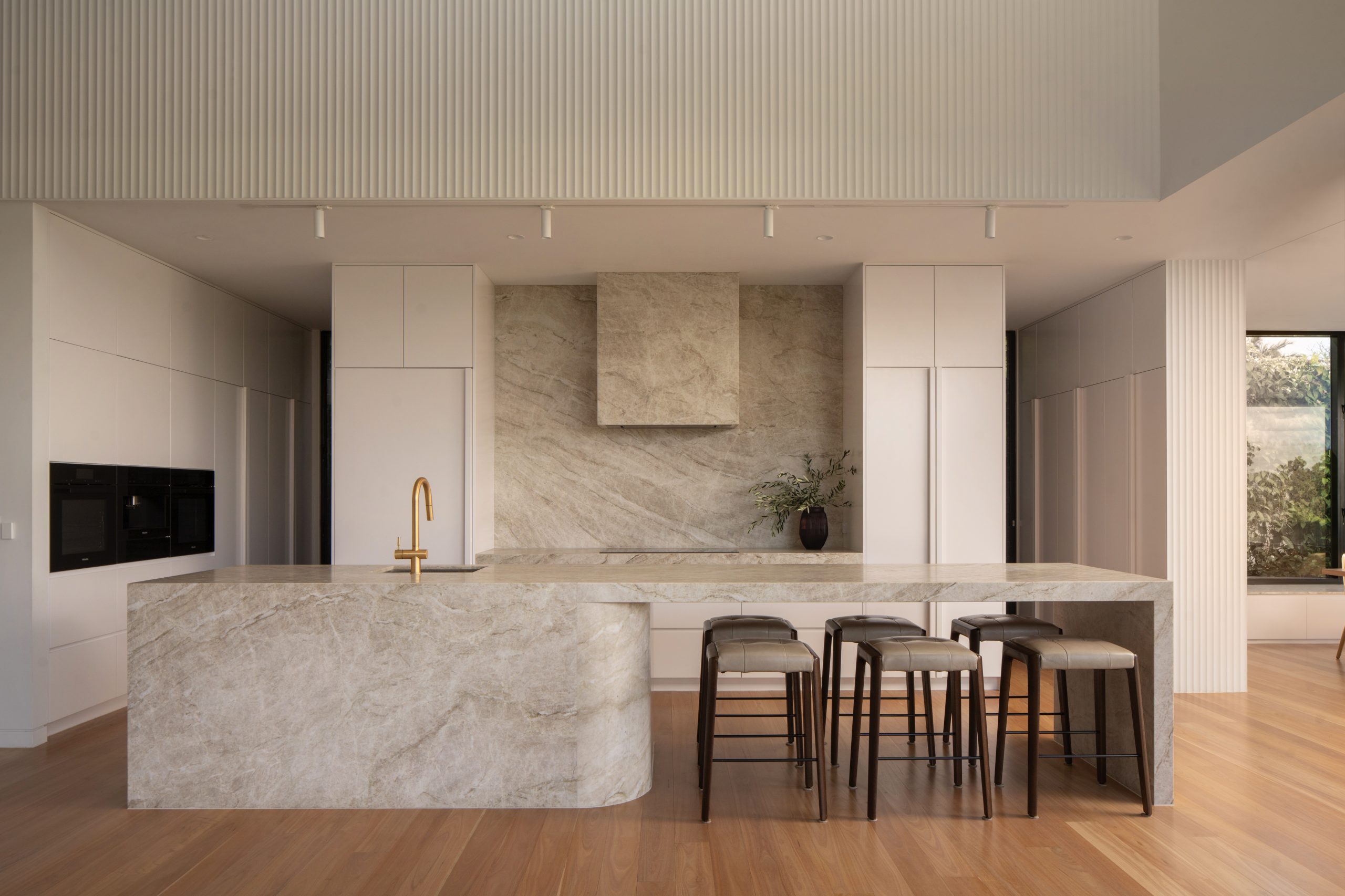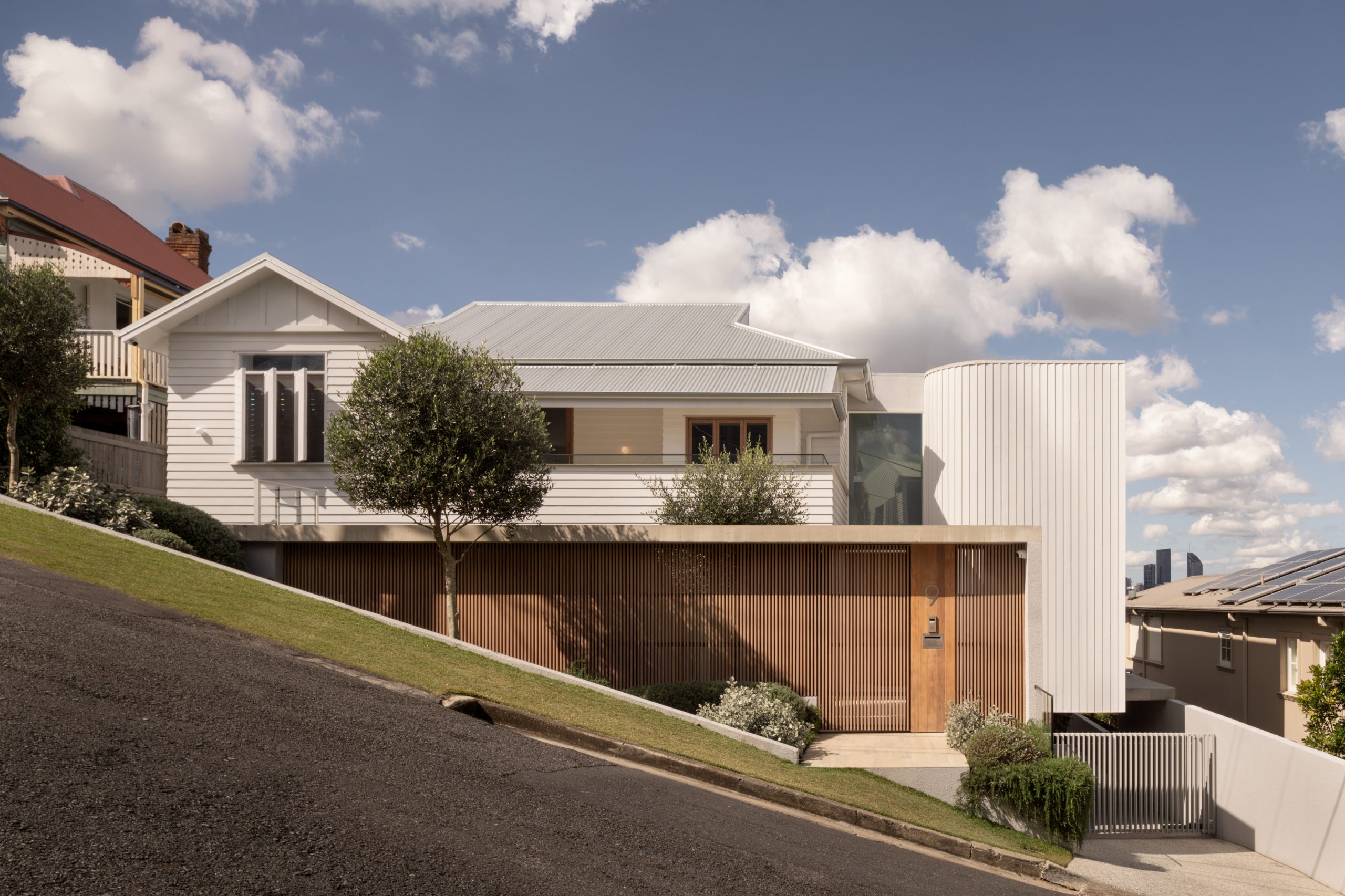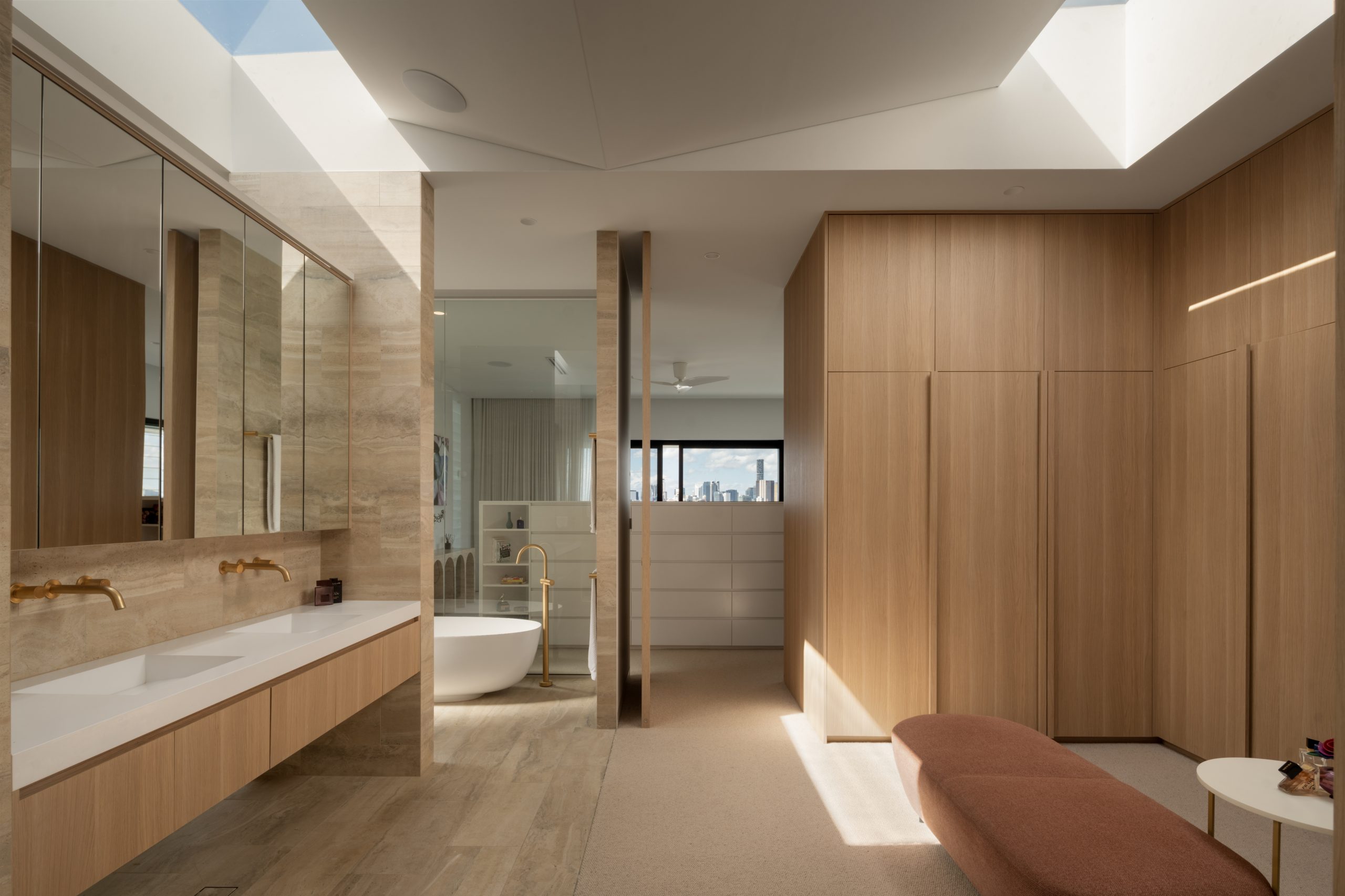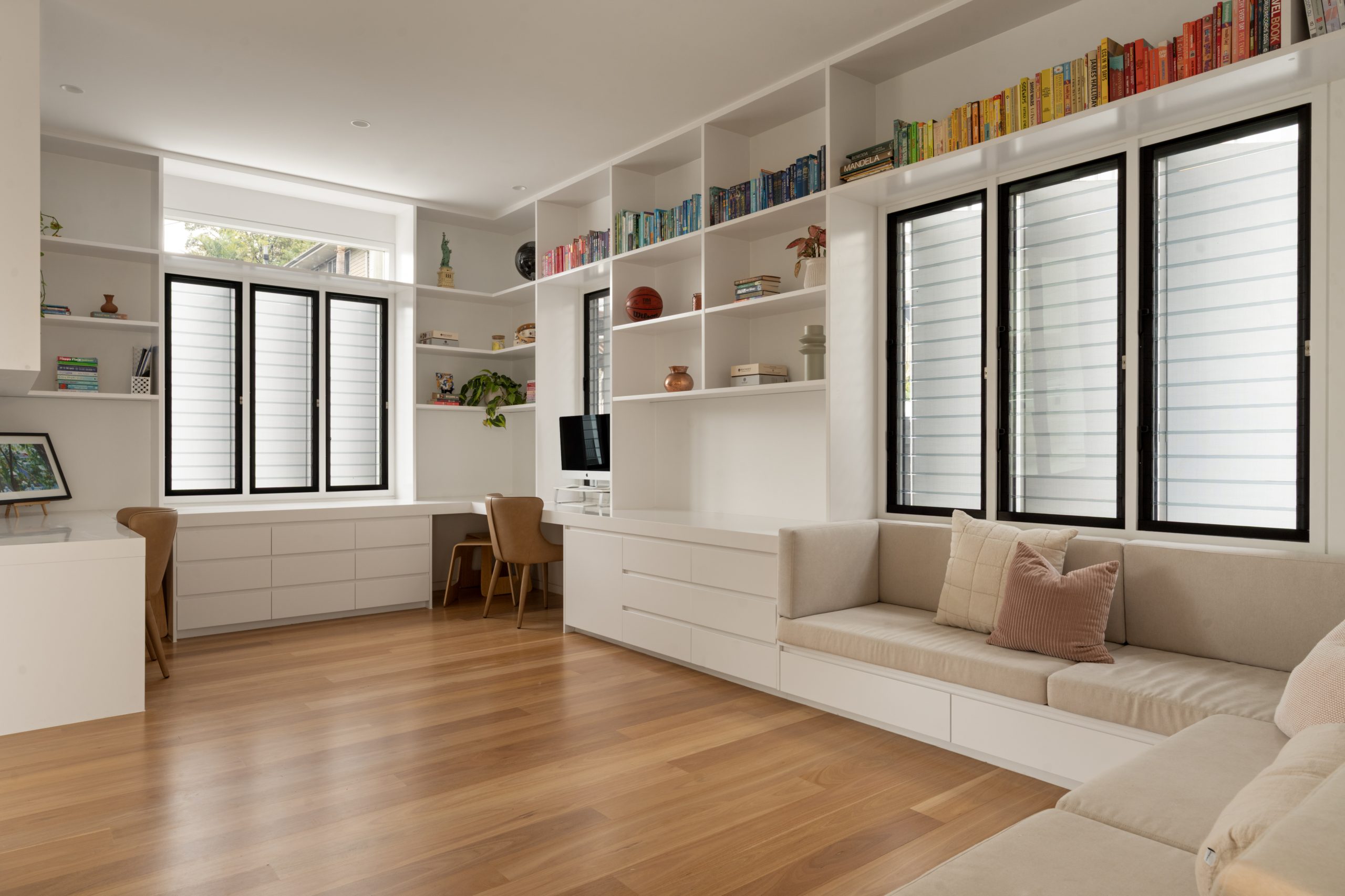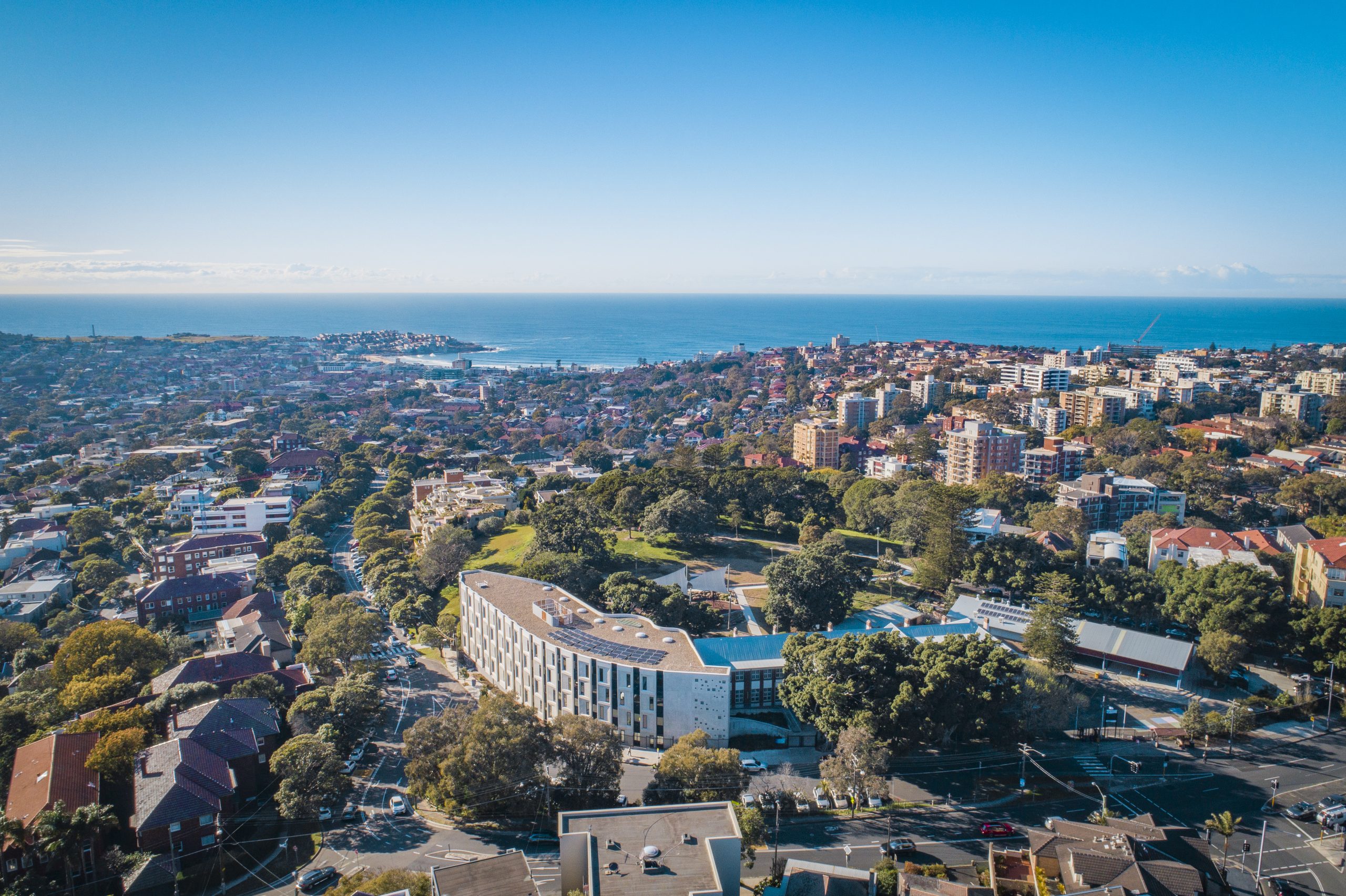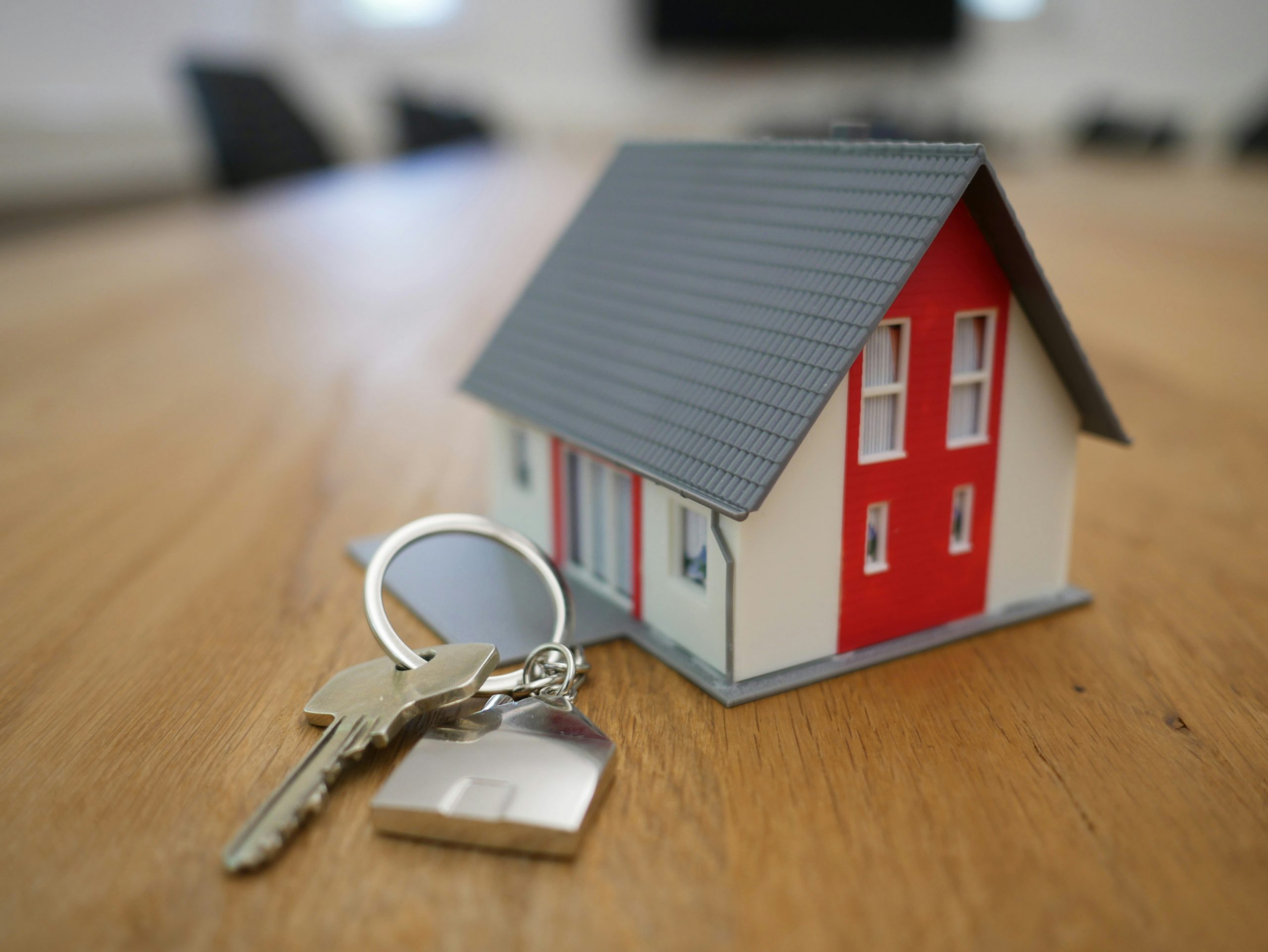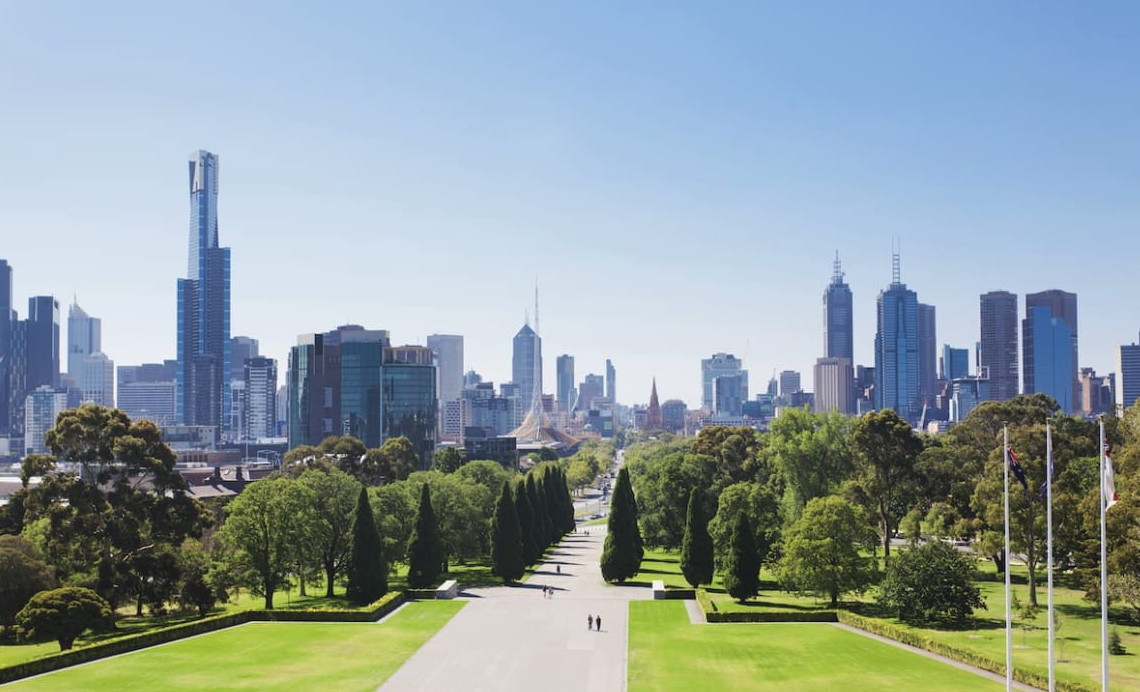CELEBRITY BUILDER GRAYA UNVEILS PADDINGTON MASTERPIECE
A striking new build in Paddington, Skyline pairs Graya’s trademark craftsmanship with Joe Adsett’s award-winning design.
Paddington’s skyline has a new star. A collaboration between celebrity builder Graya and award-winning architect Joe Adsett, this recently completed luxury residence is turning heads with its commanding city views, sculptural design and extensive list of high-end features.
Now on the market with Ray White New Farm agents Matt Lancashire and Josh Brown, the five-bedroom home is one of only a handful of private commissions by Graya, better known for creating showpiece addresses for Brisbane’s sporting and social elite.
The two-storey residence with iconic city views has no official price guide, given Queensland’s restrictions on pricing, but the latest sale on Reading Street, Paddington, was made in April when a four-bedroom house on 562 sq m sold for $4.38 million.
Sitting on a much larger 810sq m block, Skyline is one of the rare private residences by Graya among a handful of homes built for Brisbane’s most famous residents.
The high-profile firm is known for creating show-stopping houses for VIP clients, including footballer Darius Boyd and his wife Kayla, Wallaby Israel Folau, basketballer Aron Baynes and model Erin McNaught and her husband, rapper Example.
Brothers Andrew and Rob Gray, the celebrity builders behind Graya Constructions, have also just wrapped on the landmark project Kloud at Palm Beach. The Gold Coast development includes an apartment bought off the plan by globetrotting tennis legend Ash Barty and a palatial penthouse that just fetched $9.1 million after only 15 on the market.
Graya-built homes have been making headlines for their impressive resale value during a Brisbane housing boom. In June, a Mediterranean-inspired Hamilton home built by the brothers turned a $4 million profit in just 12 months when it sold for $12.5 million.
Skyline’s 20m frontage cuts an impressive figure and, thanks to the sloping block, captures a sweeping panorama of the city.
Crafted using a palette of stone and timber, the house has a long list of luxury fittings and finishes throughout as well as grand walls of glass to frame the views and draw in loads of natural light.
The L-shaped footprint features an open plan living and dining zone off the gourmet kitchen, which houses Miele appliances, a vast eat-at island bench, and a butler’s pantry.
This everyday space flows seamlessly into an outdoor kitchen on the covered terrace, a large, level lawn, and a unique heated infinity pool and spa, designed by Jack Boyd and recognised as a Master Builders Award finalist.
Upstairs, the accommodation level is home to a spacious main bedroom suite with a private balcony, a dual shower en-suite with a freestanding tub, plus a walk-in wardrobe with a skylight.
A gallery-style mezzanine walkway creates a double-height void below and leads to three more bedrooms, two with en-suites. There is also a home office with built-in desks, a gym space with storage and another balcony.
Additional features of the Paddington house include an entry-level guest room with an ensuite and built-ins, a separate media room, a mud room, laundry with a chute and drying court, a four-car lock-up garage, an outdoor shower, a fire pit, a Control4 smart home system, extensive security, irrigation, and solar.
Skyline is close to cafes, restaurants, boutiques and galleries, as well as multiple sought-after schools.
Skyline at 9 Reading St, Paddington is listed via an expressions of interest campaign closing on September 12 at 5pm.
Formula 1 may be the world’s most glamorous sport, but for Oscar Piastri, it’s also one of the most lucrative. At just 24, Australia’s highest-paid athlete is earning more than US$40 million a year.
From gorilla encounters in Uganda to a reimagined Okavango retreat, Abercrombie & Kent elevates its African journeys with two spectacular lodge transformations.
Ray White senior data analyst Atom Go Tian says Sydney’s elite postcodes are pulling further ahead, with Bellevue Hill dominating the nation’s most expensive streets in 2025.
Sydney has cemented its status as the nation’s luxury capital, with Kambala Road in Bellevue Hill being Australia’s most expensive street this year, posting a median house price of $39.35 million.
And, according to Ray White senior data analyst Atom Go Tian, last year’s leader, Wolseley Road, was excluded from this year’s rankings due to limited sales.
“Wolseley Road recorded only three sales this year and was therefore excluded from the rankings, though its $51.5 million median would have otherwise retained the top position,” he says.
Bellevue Hill continues its dominance, accounting for six of the nation’s top 10 streets. Tian says the suburb’s appeal lies in its rare blend of location and lifestyle advantages.
“The suburb’s enduring appeal lies in its rare combination of proximity to both the CBD and multiple beaches, harbour views, and large estate-sized blocks on tree-lined streets.”
Vaucluse remains a powerhouse in its own right. “Vaucluse extends this harbourside premium with even more direct beach access and panoramic water views,” he says.
The gulf between Sydney and the rest of the country remains striking.
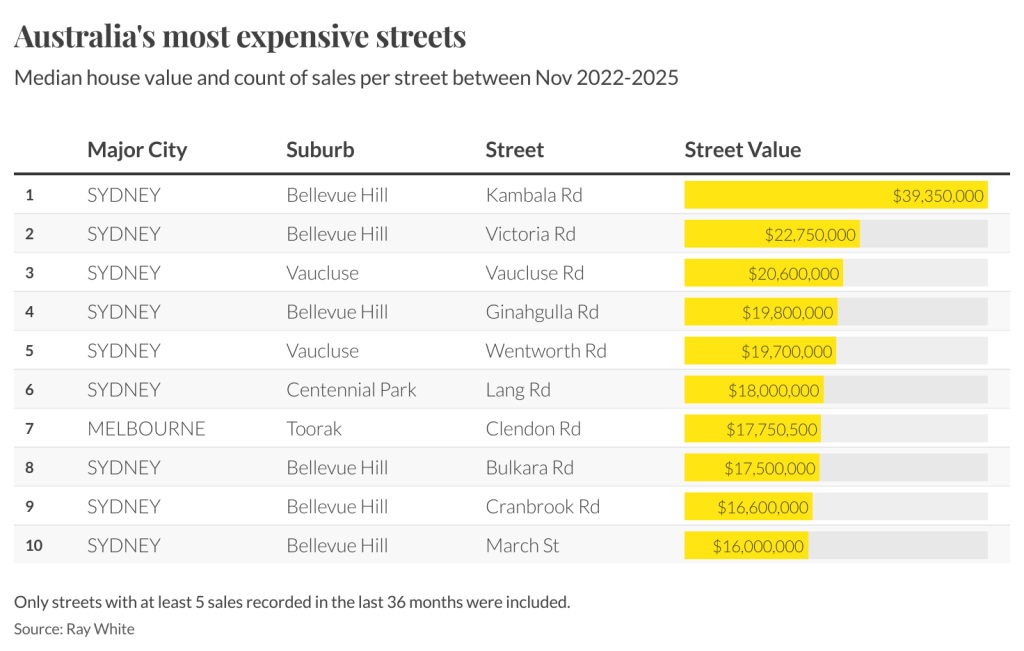
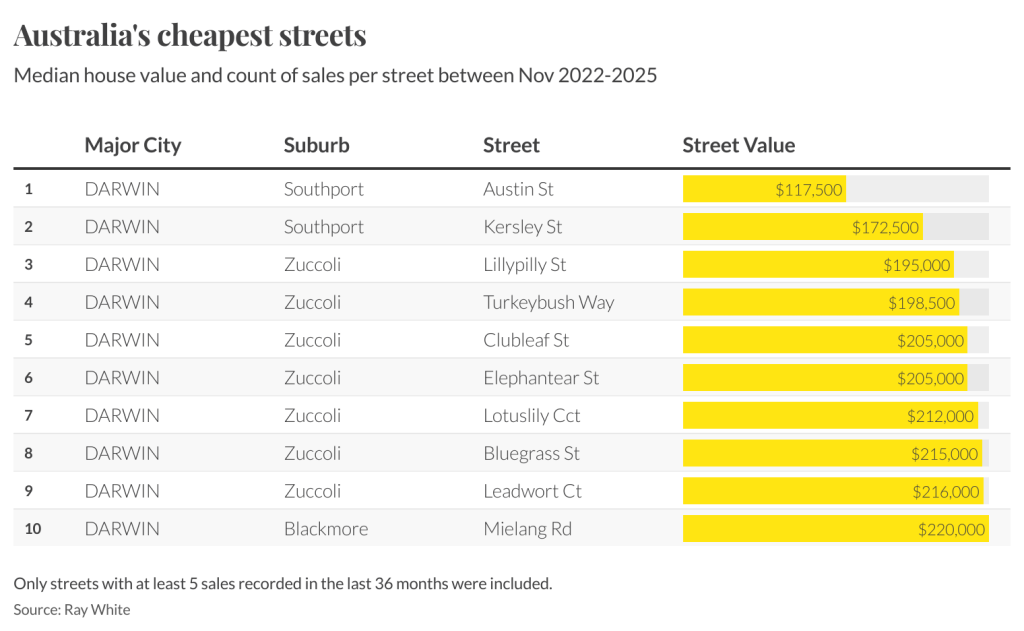
According to Tian, “Sydney’s most expensive streets are more than five times more expensive than the leading streets in Perth and Brisbane, and more than 10 times the premium streets in Canberra and Adelaide.”
He attributes this to Sydney’s economic role and geographic constraints, describing it as “Australia’s financial capital and its most internationally connected city.”
Beyond Sydney, each capital city has developed its own luxury hierarchy. Tian highlights Melbourne’s stronghold in Toorak, noting that “Melbourne’s luxury market remains centred around Toorak, led by Clendon Road, St Georges Road and Linlithgow Road.”
Brisbane’s prestige pockets are more dispersed: “Brisbane’s luxury real estate shows a more diverse pattern,” he says, led by Laidlaw Parade at $6.5 million. Perth’s top-end market remains anchored in the Peppermint Grove–Dalkeith corridor, with Forrest Street at $7.5 million.
He also points to the stark contrast at the lower end of the spectrum. “Darwin presents a mirror image, hosting all 10 of the country’s cheapest streets,” Tian says. Austin Street in Southport sits at just $117,500.
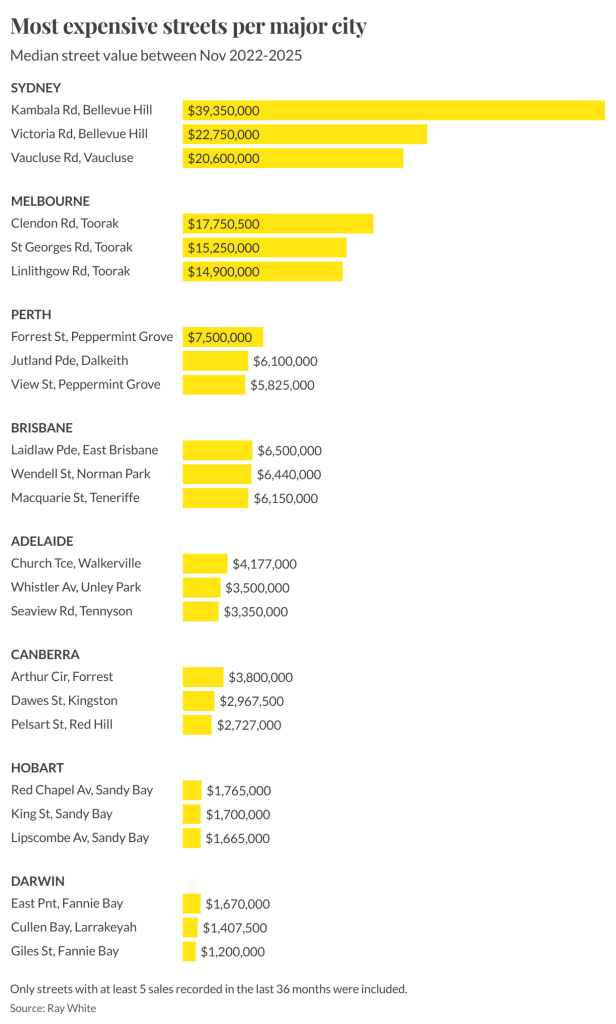

The national spread reaches its extreme in New South Wales. “Sydney emerges as the most polarised market, spanning an extraordinary range from Railway Parade in Katoomba at $385,000 to Kambala Road’s $39.35 million,” Tian says.
Methodology: Tian’s analysis examines residential house sales between November 2022 and November 2025, with only streets recording at least five sales included. Several streets with higher medians, including Black Street, Queens Avenue and Clairvaux Road in Vaucluse, were excluded because they did not meet the sales threshold.
Australia’s housing market defies forecasts as prices surge past pandemic-era benchmarks.
Australia’s market is on the move again, and not always where you’d expect. We’ve found the surprise suburbs where prices are climbing fastest.



